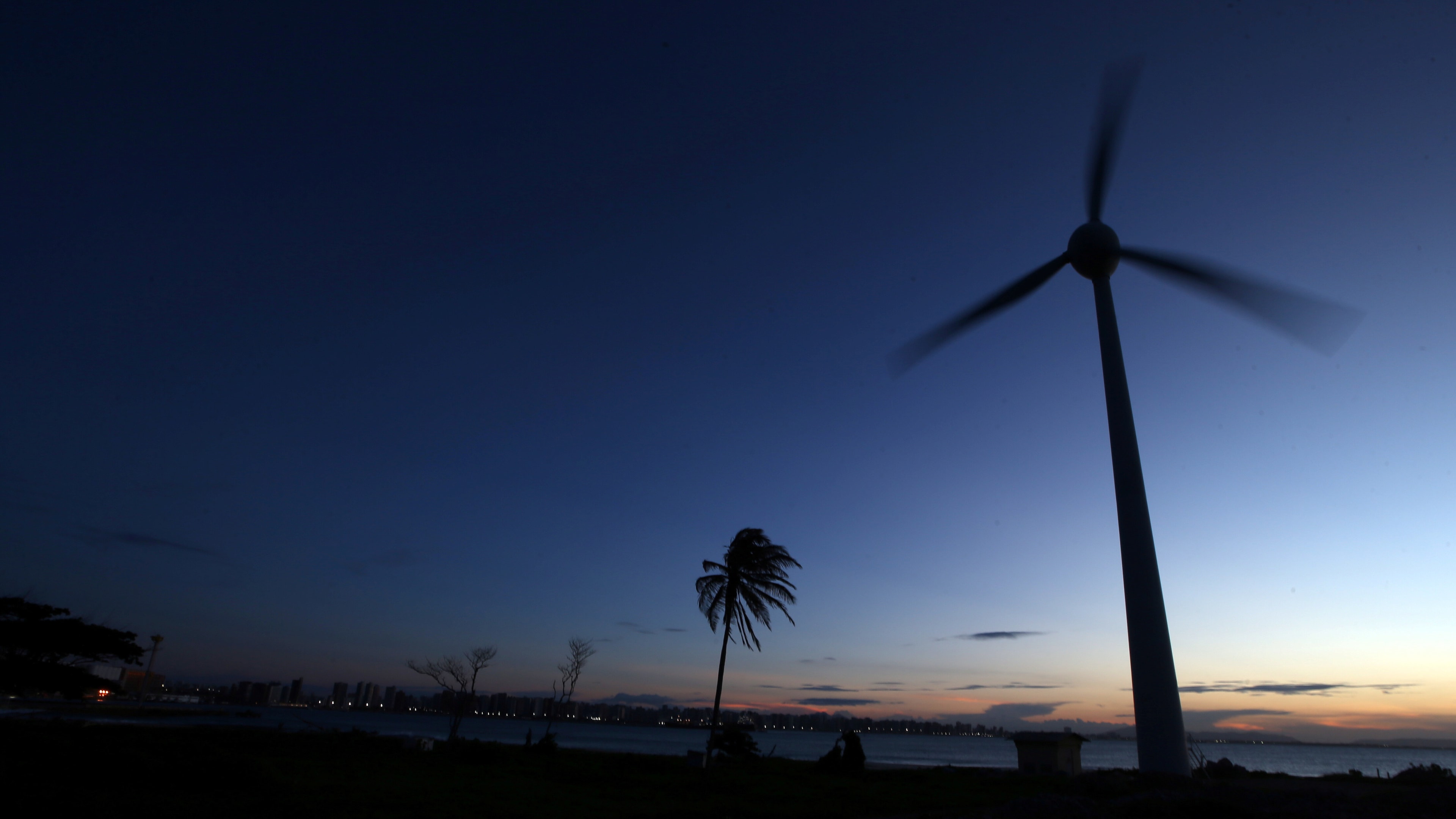Lake-effect snow storms: How they caused 6 feet of snow in Buffalo

'Lake-effect snow' has been hitting parts of the US.
Image: REUTERS/Carlos Osorio
Stay up to date:
Canada
Accept our marketing cookies to access this content.
These cookies are currently disabled in your browser.
- The Buffalo region of the US has been affected by 'lake-effect snow' – a cold, dry air that sweeps across the Great Lakes and sucks up moisture that falls as snow.
- Lake-effect snow is influenced by the differences between the amount of heat and moisture at the lake's surface and in the air a few thousand feet above it.
- Models predict that additional warming due to climate change will lead to more lake-effect snow, as well as lake-effect rain.
It’s hard for most people to imagine 6 feet of snow in one storm, like the Buffalo area saw over the weekend, but such extreme snowfall events occasionally happen along the eastern edges of the Great Lakes.
The phenomenon is called “lake-effect snow,” and the lakes play a crucial role.
It starts with cold, dry air from Canada. As the bitter cold air sweeps across the relatively warmer Great Lakes, it sucks up more and more moisture that falls as snow.

I’m a climate scientist at UMass Amherst. In the Climate Dynamics course I teach, students often ask how cold, dry air can lead to heavy snowfall. Here’s how that happens.
How dry air turns into snowstorms
Lake-effect snow is strongly influenced by the differences between the amount of heat and moisture at the lake surface and in the air a few thousand feet above it.
A big contrast creates conditions that help to suck water up from the lake, and thus more snowfall. A difference of 25 degrees Fahrenheit (14 Celsius) or more creates an environment that can fuel heavy snows. This often happens in late fall, when lake water is still warm from summer and cold air starts sweeping down from Canada. More moderate lake-effect snows occur every fall under less extreme thermal contrasts.

The wind’s path over the lakes is important. The farther cold air travels over the lake surface, the more moisture is evaporated from the lake. A long “fetch” – the distance over water – often results in more lake-effect snow than a shorter one.
Imagine a wind out of the west that is perfectly aligned so it blows over the entire 241-mile length of Lake Erie. That’s close to what Buffalo was experiencing during the storm that started Nov. 17, 2022.

Once the snow reaches land, elevation contributes an additional effect. Land that slopes up from the lake increases lift in the atmosphere, enhancing snowfall rates. This mechanism is termed “orographic effect.” The Tug Hill plateau, located between Lake Ontario and the Adirondacks in western New York, is well known for its impressive snowfall totals.
In a typical year, annual snowfall in the “lee,” or downwind, of the Great Lakes approaches 200 inches in some places.
Residents in places like Buffalo are keenly aware of the phenomenon. In 2014, some parts of the region received upwards of 6 feet of snowfall during an epic lake-effect event Nov. 17-19. The weight of the snow collapsed hundreds of roofs and led to over a dozen deaths.

Lake-effect snowfall in the Buffalo area is typically confined to a narrow region where the wind is coming straight off the lake. Drivers on Interstate 90 often go from sunny skies to a blizzard and back to sunny skies over a distance of 30 to 40 miles.
The role of climate change
Is climate change playing a role in the lake-effect snow machine? To an extent.
Fall has warmed across the upper Midwest. Ice prevents lake water from evaporating into the air, and it is forming later than in the past. Warmer summer air has led to warmer lake temperature into fall.
Models predict that with additional warming, more lake-effect snow will occur. But over time, the warming will lead to more of the precipitation falling as lake-effect rain, which already occurs in early fall, rather than snow.
This article was updated Nov. 20, 2022, with snowfall reaching 6 feet.
What’s the World Economic Forum doing about climate change?
Accept our marketing cookies to access this content.
These cookies are currently disabled in your browser.
Don't miss any update on this topic
Create a free account and access your personalized content collection with our latest publications and analyses.
License and Republishing
World Economic Forum articles may be republished in accordance with the Creative Commons Attribution-NonCommercial-NoDerivatives 4.0 International Public License, and in accordance with our Terms of Use.
The views expressed in this article are those of the author alone and not the World Economic Forum.
Forum Stories newsletter
Bringing you weekly curated insights and analysis on the global issues that matter.
More on Climate ActionSee all
Lim Chow-Kiat
August 21, 2025
Tom Crowfoot
August 20, 2025
Charlotte Edmond and Rebecca Geldard
August 19, 2025
Yufang Jia and William Jernigan
August 18, 2025
Jürgen Karl Zattler and Adrian Severin Schmieg
August 18, 2025
Piyush Verma
August 18, 2025





